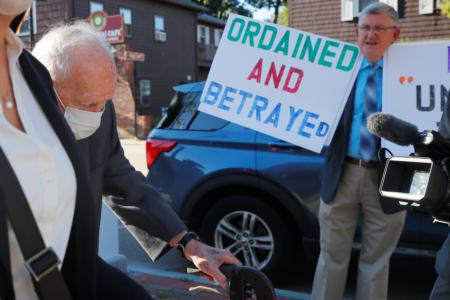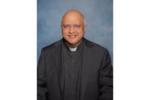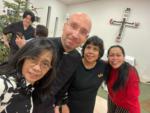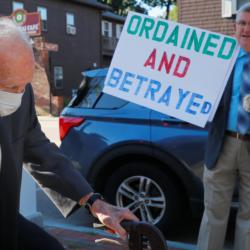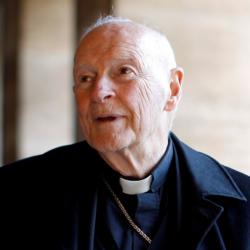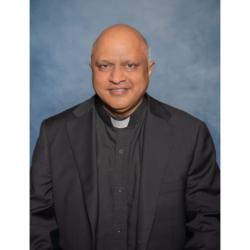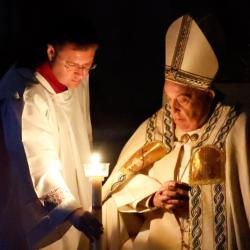Parkinson’s patient urges against embryonic stem-cell research
BRIGHTON — Patricia Payne had been dancing since she was a child. She had performed in this country and Canada, taught classes and took classes in classical, ballet, modern and jazz dance. But all of that changed when she began to experience severe, unexplained tremors which for over a year her doctor diagnosed as bad nerves. He told her to rest.
“I continued with dance for awhile and then it just wasn’t possible,” Payne, 64, told The Pilot in a telephone interview. “I was literally shaking inside and outside with tremors. It was so strong that I thought I was going to be blown away.”
Payne was diagnosed with Parkinson’s disease in 1991 while living in Rockport. On Feb. 16, she testified at a Statehouse committee hearing against a new bill encouraging embryonic stem-cell research sponsored by Senate President Robert E. Travaglini, D-Boston. Supporters of the bill have said they hope to get the bill passed by the end of March and have enough votes to override an anticipated veto by Gov. Mitt Romney.
Even though embryonic stem-cell research may someday lead to a treatment for Parkinson’s, Payne and her husband, Richard, who now live in Winsted, Conn., are morally opposed to the research. Patricia testified that she is in constant pain and suffers from severe shaking, but her suffering is not the real issue. She urged committee members to realize that embryos are human beings.
“Patricia’s opposed to the killing of human embryos in order to cure and also wanted to make known to these people that there were creative alternatives to embryonic stem-cell research that don’t involve killing human life to in some way heal it,” said Richard.
The Paynes spoke about alternatives such as adult stem-cell research, in which stem-cells are harvested from the patient, not an embryo, in order to cure diseases. Patricia has found she is eligible for phase two of an adult stem-cell therapy project that was developed in California.
“The phase one involved a single Parkinson’s patient who was relieved of 80 percent of his symptoms,” said Richard.
The doctors took a “pea-sized” piece of the patient’s brain tissue, “morphed” the tissue to identify the neurons that secrete dopamine — a deficiency of which causes Parkinson’s symptoms — then they “morphed” the neurons into millions of cells that they plant back into the brain, he added.
Patricia said legislators do not seem to understand that adult stem-cells have cured almost 100 diseases and embryonic stem-cells have provided no cures.
“We really believe in the fact that the government is not doing very well with the stem-cell issues,” said Patricia.
That is why she chose to share her experience, she said. But after waiting over two hours for her opportunity to speak at the hearing, Patricia was not sure she would be able to testify because she could feel her body functions diminishing.
“It scared me,” she said. “I was feeling so threatened by the whole thing. I was really ready to pack my bags and leave.”
“I even questioned if I should be there, but we can’t play God,” she continued. “If God wants us there to say something and to do something, then that’s why we end up there and I’m glad that I didn’t leave, because it was important.”
Patricia was able to tell the committee her story — her experience as a mother of five, who loves dancing and hates taking pills, cannot exercise, is in constant pain and must carefully regulate her medications.
When Patricia was first diagnosed, the medicines she took were effective in reducing her symptoms, but the body builds up an immunity to the medications, and she is now working closely with a neurologist to try to find something that will help, she said.
“We’re really struggling again with medications,” she said. “If I don’t take my medication, I can’t function — I literally go into a freeze, and I can’t move for periods of time, and when I do take the medication, it wears off very quickly.”
The doctors have found disintegration of the bone structure around her lower spine, which is related to Parkinson’s and her arthritis — a condition that often affects Parkinson’s patients.
“It has put a lot of pressure on the spinal cord, so she has pain throughout her body,” Richard said. “[The pain] is always there, but it’s certain times more severe than others, and sometimes makes her lose her balance, and also it creates almost an inability to walk.”
“She doesn’t like to talk about it too much,” he added. “She talks to me about it though. That’s what husbands are for.”
“What we have come to in dealing with Patricia’s Parkinson’s has to do with the value of suffering and a recognition of the central role that suffering and pain play in drawing more closely to Christ and to His suffering,” said Richard. “We live in a world where there’s not so much respect for sacrifice, and sometimes you have to give up in order to have ethical science.”
Patricia said the experience was definitely worth the difficulty of testifying.
“Some of the legislators came up after and thanked her and said that she had moved them,” Richard added.
“I feel because it’s Lent and it’s a very powerful season for the Church, God was asking me to share my experience, strength and hope, and I shouldn’t say no,” she said.
